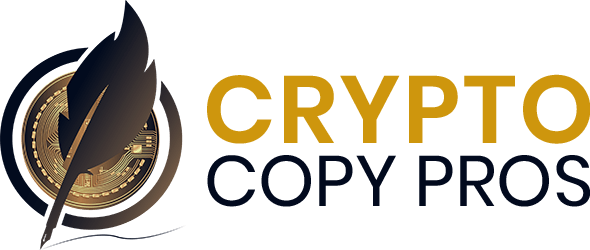- Posted by: Joshua Clow
- Category: Content Strategy, Guides

Your white paper, web copy and marketing materials are critical to the success of your ICO or STO, telling your story and demonstrating the opportunity to potential investors.
The project, technology, strategy and team may be solid, but if you aren’t doing a good enough job in presenting your vision and opportunity – you may end up alienating your audience and failing to secure enough funds to launch.
Here, I run through the most common mistakes made by token sale coordinators in terms of the presentation of their literature, and how to avoid them to boost reception and performance overall.
Failure to tailor to different reading styles
ICO investors come in all shapes and sizes, and white papers aren’t exactly ‘one size fits all.’ I love to read an 80-page white paper as much as the next person, but it’s important to consider the varying levels of time, interest and knowledge that potential investors may have.

To cater to all needs and maximize reach, some token sales have been known to push out several different documents in support of a main white paper. This is generally a good idea, as it allows you to get key messages across to the right people. Tech gurus and evangelists will gravitate towards the technical section of your white paper, or a yellow paper if you have one available. Busy professionals who see many opportunities may be looking for your one-pager or light paper, to get a core understanding of the opportunity at a glance.
If you are presenting in person, then it goes without saying that you should tailor your pitch to the audience. Ask yourself; what is their background and level of understanding? what are my objectives – investment for private sale? potential partnerships?
Bad use of language
Many token sales are guilty of this. Whether their content is inflating the truth, overselling the product, confusing the audience with technicalities or is otherwise unclear or overly wordy – investors will either see right through it, or lose interest altogether.

The rule of thumb when preparing your literature is this: if you have to read something twice to understand it, it needs to be re-written. Be mindful of the fact that you have the advantage of insider knowledge. If you’re struggling to make sense of your executive or technical overviews, a potential investor completely new to your project has very little chance.
Remember that you aren’t necessarily pitching to your future customers here, so feel free to drop any cheesy sales language in favour of winning over investors with accurate insights and realistic projections.
Big promises and little proof
Investors aren’t silly. 55% of all ICOs failed to complete in Q2 2018 and as many as 80% of all ICOs are scams, according to a report from ICORating. Even still, ICO investment figures continue to grow with $8.3 billion raised during that quarter, nearly tripling Q1 at $3.3 billion.
With the hype dying down, increasing regulatory involvement and Satis reporting a staggering 91% of ICOs failing to list on exchanges, investors grow evermore cautious in contributing to token sales. Long gone are the days when you could write your white paper in a garage somewhere and raise millions for a product that doesn’t exist.
It is important to stay true to your research and to back up all claims when possible. Don’t overextend your projections or take liberties when presenting the size of your market or revenue model. Inaccuracies and unfounded or overly ambitious claims set off immediate red flags. Although your project may very well be ‘one of a kind’ and ‘revolutionising the market’ – take steps to prove the viability of the model with your demo/MVP/beta product. Demonstrate market strength by looking to the performance of competitors or other hard data.
If you know your project has weaknesses, don’t bury them. They will be pointed out sooner or later, and it’s much better to have that discussion in public. Identify and work to address or mitigate any potential threats in your white paper and supporting documents to win the trust of investors.
Over-designed or out of date
We’ve all seen our fair share of these. Documents that look like they were thrown together in Microsoft office ‘97 and websites that have stretched stock images from the same time period. I talk here about the importance of branding during your token sale, but a lot of it comes down to a little common sense.
On the other side of the (bit)coin, you have those projects that have spent more time designing their website, than they have in developing their project. While an action-packed and bold design can work for creative blockchain businesses, it can be offputting and detract from the experience in excess, so be careful.
Treat your published materials and web presence with respect, since they support your project as a first impression for new prospects. For guidance, look to pro spec business plans, reports and the websites of traditional business/financial institutions and take note of how they present data, control pacing and deliver key points and highlights alongside technical details.
Invisible team
This one speaks for itself – it’s difficult to trust an opportunity put together by an invisible team. Serious investors and even ICO rating websites will perform background checks on your team to verify their identity and legitimacy, and blocking that process with anonymity can become a problem.

Of course, sometimes it’s absolutely necessary to protect the identities of team members for the security of the person or the project. This usually applies only to developers, where a rival business could poach an individual with a job offer to gain a competitive advantage, learn inside info or slow down your progress.
However, team members – and founding team members in particular – should be public facing, making all online profiles and past projects known. Transparency, after all, is the foundation on which this industry is built. In showing your cards and providing proof of your legitimacy, you make it much more likely for your token sale to be the next Telegram or EOS.
